The Lut Desert
Thursday, 24th June 2010 by RobK
If heat and dryness are the hallmarks of a good desert, then the Lut Desert in Iran might just be the most deserty of the lot.
Covering more than 50,000sq km in the southeast of the country, this region (also known as Dasht-e Lut) has recorded the hottest surface temperatures on Earth: in 2005, a reading of 70.7°C (159.3°F) was measured by satellite.1
That's hot enough to fry an egg – quite literally. According to the Egg Safety Center, "Egg white coagulates between 144 and 149°F, egg yolk coagulates between 149 and 158°F and whole eggs between 144 and 158°F". In fact, it's so hot and dry in places that not even bacteria can survive – scientists have tested this by opening containers of sterilised milk and leaving them sitting in the sun. They don't spoil! (In the image below, the lighter the colour, the higher the temperature.)
The highest temperatures were recorded where the surface consists of dark volcanic rock which absorbs the heat of the sun: here the landscape is a mixture of rugged canyons and snaking channels carved out by the rare rains.
You wouldn't want to live there, but the Lut Desert is rather beautiful when viewed from a safe distance, revealing intricate patterns of stripes, and bizarre-looking dunes, some surrounded by smaller copies of themselves, forming an almost fractal landscape.
Inhospitable as it is, this area is far from, er, deserted. Right on the edge of the Lut are several small towns, such as Shahdad, which look remarkably green from above. Wikipedia suggest a lot of this greenery could be date palms. Even smaller settlements are further out into the desert, with what appear to be irrigation ponds, though quite where the water comes from is a bit of a mystery!
There's even the odd road – or is it an irrigation channel? Whatever it is, it seems it's being extended: if you follow the branch off to the west, you can see lots of earthworks (or should that be sandworks?)
Some brave souls, though, obviously prefer to make their own tracks.
Read more about the Lut Desert at Wikipedia
-
Note that this is the temperature of the ground itself, which is considerably higher than the air temperature that would be measured by a standard weather station. The world record air temperature is 57.7°C (136°F), set at Al-'Aziziyah, in Libya, in 1922. ↩︎
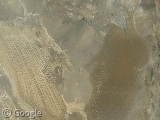
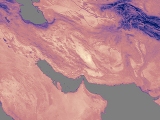
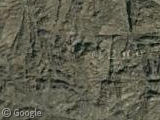
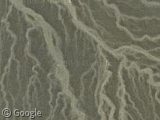
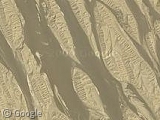
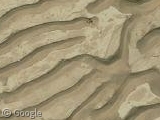
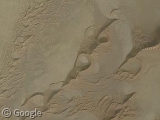
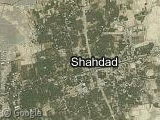
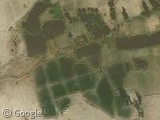
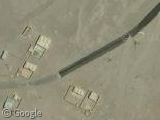
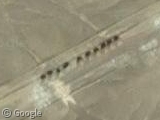
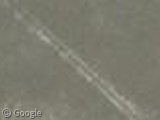
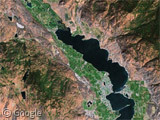
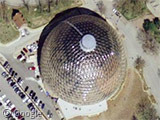
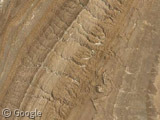
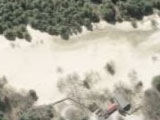
i was there last year . ( i am persian )
when I was on salt desert near khor i heard few years before an intact corpus of a strayed cow was found, nothing was defected but a little under it’s tail. It seems that it had been on there for several years. the max temperature will reach +65 celsius; and azs you know it’s enough to kill all bacteria.
nobody live in lut desert but ahwaz (in southwest of iran) is hotest big sity
If you go further south to Sirch you can see a picture of a ski slope :O The water is brought in from aquifer by Ghanats which are under ground canals to prevent evaporation too. If you look closely you will find these serial dots on the landscape which are wells by which they dug the canals.
does anyone live in the lut desert?????
help me out!!!!!!!!!!!!!!!please 🙂